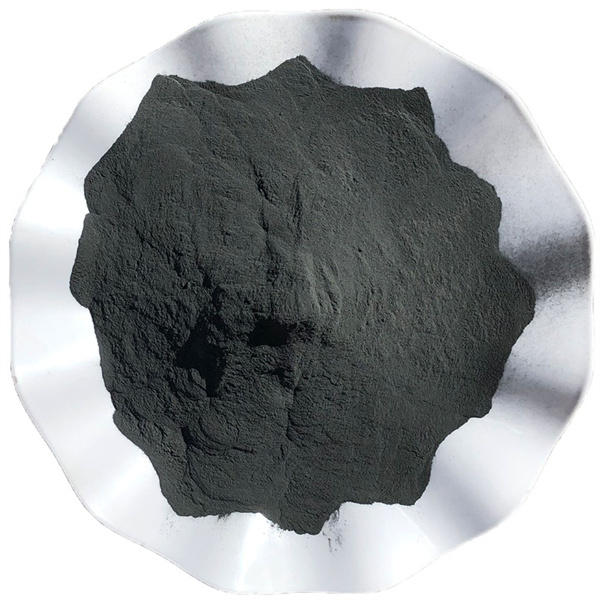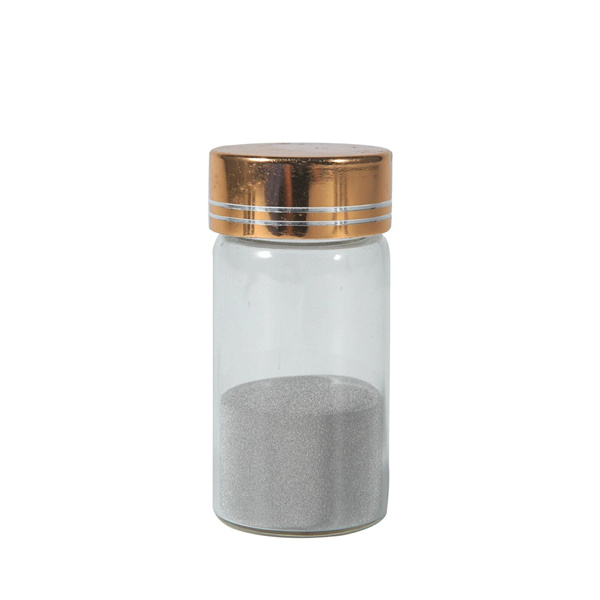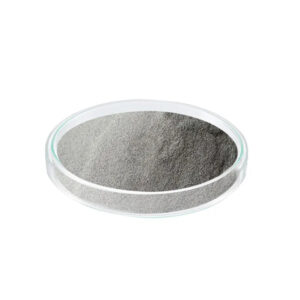Alloy iron powder refers to iron powder with alloying elements to enhance properties. This guide provides a comprehensive look at alloy iron powder types, compositions, characteristics, uses, suppliers, and comparisons.
Overview of Alloy Iron Powder
Key points about alloy iron powder:
- Base iron powder with alloying elements added
- Provides higher strength, hardness, wear resistance than plain iron
- Common alloys include stainless, tool steel, and low alloy types
- Used in powder metallurgy and additive manufacturing
- Tailorable properties by adjusting composition
- Available in standard and custom alloys
Alloying expands the capabilities of iron powder across more demanding applications.

Alloy Powder Compositions
Various alloying elements are added to iron powder:
Common Alloy Powder Compositions
| Alloy Type | องค์ประกอบทั่วไป |
|---|---|
| Stainless | Fe + 10-30% Cr + Ni, Mn, Mo |
| เหล็กเครื่องมือ | Fe + Cr, Mo, V, Mn, C |
| Low alloy | Fe + <10% Cr, Mo, Cu, Ni |
Carbon, copper, nickel, chromium, molybdenum, manganese, and vanadium are common additions.
Characteristics and Properties
Alloying modifies physical and mechanical properties:
- ความแข็งแรงและความแข็งที่สูงขึ้น
- Improved wear resistance and durability
- Enhanced high temperature properties
- ความต้านทานการกัดกร่อนที่ดีขึ้น
- More variation in magnetic properties
- Heavier density compared to plain iron
The right alloys optimize properties for applications requiring higher performance.
แอปพลิเคชันของ Alloy Iron Powder
Typical uses taking advantage of alloy iron powder properties:
- Automotive parts – gears, piston rings, synchronizers
- Material processing – powder metal tooling
- Fluid power – valves, caps, seals, bearing carriers
- Magnetics – low/non-magnetic components
- Additive manufacturing – 3D printed tooling and components
- Wear parts – bearings, bushings, punches
- Friction components – brakes, clutches, transmission parts
Alloying expands the design space for high performance powdered iron components.
ข้อกำหนดและเกรด
Various standard alloy iron powder grades are available:
- FSM-HP: 4% Ni, 1.5% Cu iron powder
- FLN2-4405: 2% Ni, 1% Cu, 0.5% Mo iron powder
- Ancorsteel 1000B: 1% Ni, 0.5% Mn iron powder
- ATOMET EM-1: Fe + 1.5% Ni + Mo, Cu, C
- Custom alloy compositions possible
Specifications include ISO, ASTM, ANSI, and internal standards from suppliers.
Alloy Iron Powder ซัพพลายเออร์
Leading global suppliers of alloy iron powder include:
- Höganäs – Wide range of water and gas atomized alloy grades
- Rio Tinto Metal Powders – AncorSteel, Atomet customized alloys
- JFE Steel – Stainless, tool steel, low alloy grades
- CNPC Powder – Low alloy grades and stainless grades
- BASF – Custom alloy iron powders for additive manufacturing
Choosing qualified suppliers ensures reliable and consistent alloy powder.
Pros and Cons of Alloy Powder
| Advantages | ข้อเสีย |
|---|---|
| Higher strength and wear resistance | More expensive than plain iron powder |
| Improved high temperature properties | Lower compressibility requiring higher press pressures |
| ความต้านทานการกัดกร่อนที่ดีขึ้น | More difficult to fully dense after compaction |
| Custom alloy optimization | Increased powder segregation during handling |
| Match properties to application | Limitations on geometries and sizes |
Proper alloy selection balances performance and manufacturability.
Alloy vs. Plain Iron Powder
| พารามิเตอร์ | Alloy Iron Powder | Plain Iron Powder |
|---|---|---|
| ค่าใช้จ่าย | More expensive | วัสดุต้นทุนต่ำ |
| คุณสมบัติ | Stronger, harder, more variation | Lower strength and hardness |
| ความสามารถในการทำงานได้ | More challenging to compact and sinter | Easier to achieve full density |
| แอปพลิเคชัน | ส่วนประกอบประสิทธิภาพสูง | General purpose low stress parts |
| Customization | Wider range of properties | Limited property adjustment |
The right choice depends on cost, performance and manufacturing needs.

คำถามที่พบบ่อย
What is alloy iron powder used for?
Alloy iron powders are used to manufacture high performance powder metal components for automotive, fluid power, magnetic, wear, and high temperature applications.
What is the difference between plain iron and alloy powders?
Alloy powders contain elements like nickel, copper, chromium, and molybdenum added to iron to achieve higher strengths, wear resistance, and other properties not attainable with plain iron.
Are alloy iron powders more expensive?
Yes, alloy powders incur additional cost for the alloying elements. However, they enable high value add applications justifying the higher price.
What alloy compositions are available?
Common alloys include stainless, tool steel, and low alloy blends. Custom alloy compositions can also be produced to meet application requirements.
How do alloying elements change powder properties?
Elements like nickel, chromium, and molybdenum improve strength, wear resistance, hardness, and high temperature properties. Manganese increases hardenability. Carbon improves wear resistance when alloyed.
Careful alloy selection unlocks the full potential of iron powder for challenging component designs.
บทสรุป
Alloy iron powders build on the manufacturing advantages of iron powder by incorporating elements like nickel, chromium, molybdenum, copper, and carbon to enhance properties. The result is iron powder capable of matching performance requirements forstrength, wear, high temperatures, and corrosion resistance needed in critical automotive, aerospace, fluid power and industrial applications. As powder metallurgy and metal additive manufacturing continue advancing, alloy iron powders will play an essential role in pushing boundaries with ever more capable powder-based components.




